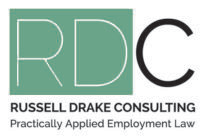Although not a process that employers willingly want to have to implement, the reality is that when seeking to address a significant breach of a company policy, or an aspect of an employee’s inappropriate behaviour or conduct, disciplinary action may be the only viable option.
Implementing a procedurally fair process is essential for ensuring that the disciplinary outcome can be successfully defended if the employee elects to challenge the outcome by way of a grievance.
The Employment Relations Authority use section 103A of the Employment Relations Act to assess the validity of an employer’s decision (this could include the issuing of a warning not just the termination of employment) to ensure that the disciplinary process was implemented correctly, and that the employer had justification to support the decision that was made.
In our experience, where employers often find their decision to be questioned is through errors made at the commencement of the process, with this impacting on the rigidity of the actions that then follow. Most employment agreements, or employee handbooks, will contain a list of actions that may be considered to be of either a potential misconduct or potential serious misconduct nature. These lists can be extensive, seeking to cover almost any action that an employee could possibly undertake or may be very short only highlighting a small number of possible offences.
The challenge for the employer from the outset of the disciplinary process is in defining what the ‘allegation’ is. The allegation being what specific action stated on the defined lists has been breached.
Many misconduct/serious misconduct lists contain statements inferring that the list is not exhaustive, and the employer reserves the right to add to the list where another specific action may have been undertaken by the employee. This is useful but can still create risk within the disciplinary process through a challenge that the employee was unaware that such actions could result in disciplinary consequences.
So how do we avoid our disciplinary decisions being successfully challenged?
Some simple tips are:
- Ideally your disciplinary lists should sit outside of your main employment agreement template
- The lists should be extensive enough to cover the majority of potential ‘discrepancies’ but not specific enough to restrict your ability to align an action to an offence.
- The lists need to be reviewed and updated on a regular basis to ensure that they reflect learnings from recent case law.
- If you are struggling to align an offence with an allegation, don’t just try to make it fit.
- Don’t try to elevate an allegation on the misconduct list as a potential serious misconduct action just because you believe that the action is at a higher level than misconduct.
If you are experiencing any issues with seeking to frame the correct allegation with the alleged actions, consider seeking external advice from us to ensure that your disciplinary process commences on the correct basis. Or, if you feel that your disciplinary misconduct/serious misconduct list may not meet current law requirements or is a good fit for your business, we are happy to review this for you.

